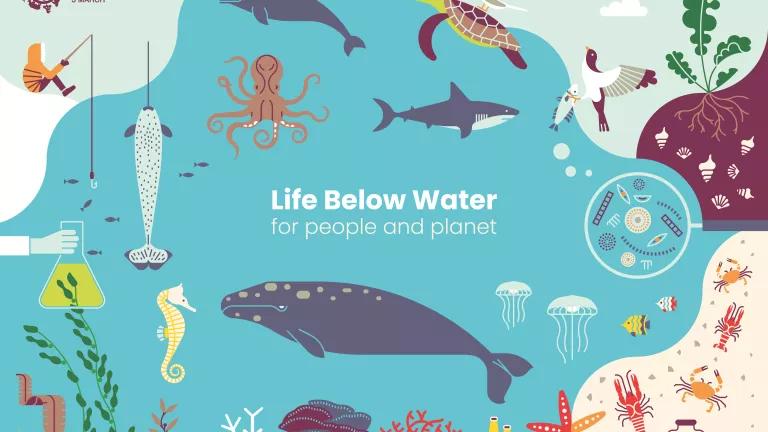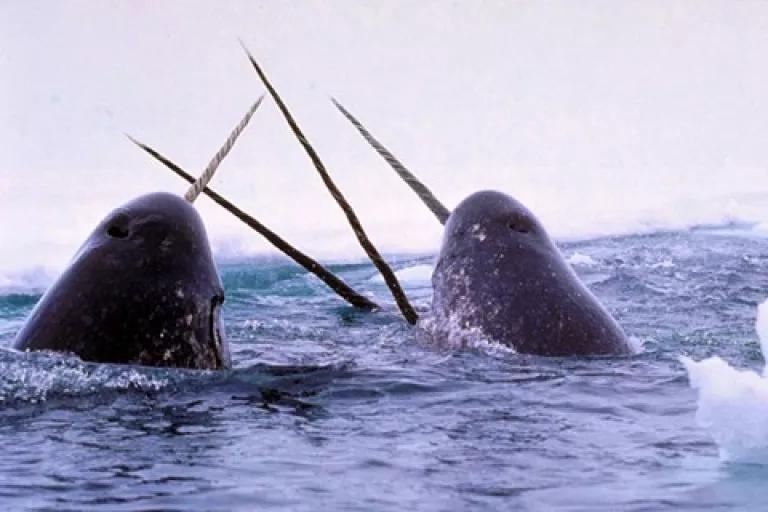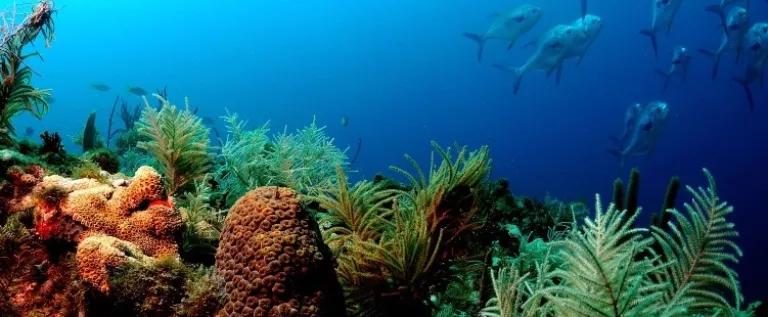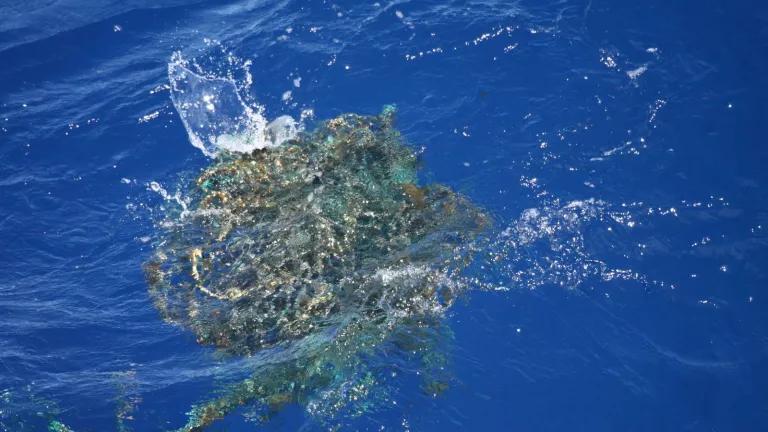
World Wildlife Day Poster 2019
World Wildlife Day is upon us. Did you get flowers or chocolates for your favorite marine wildlife? Perhaps a thank you note to narwhals for being absolutely one of the coolest animals?

Narwhal
Or that special something that asks corals to forgive us for wiping them out?

Corals
The gift from many of my NRDC colleagues is to work harder than ever to protect whales, dolphins, sharks, and other marine wildlife from the mounting harms that threaten their existence.
In 2013, the UN General Assembly proclaimed March 3 as UN World Wildlife Day to celebrate and raise awareness of the world’s wild animals and plants. Last year’s theme was “Big Cats,” and this year’s theme is “Life below water: for people and planet,” which is a perfect opportunity to highlight NRDC’s major campaigns focused on marine wildlife.
We’re taking names in the fight to secure protections for threatened and endangered species. Our fight to save the vaquita from extinction continues as we litigate against the Trump administration for its failure to ban imports of vaquita harmful fish and fish products pursuant to the Marine Mammal Protection Act. With fewer than 15 individuals remaining of this porpoise species native to Mexico’s northern Gulf of California, the vaquita may be extinct by next year’s World Wildlife Day.
We have separate litigation against the Trump administration for its failure to list the Gulf of Mexico whale as endangered, which should be obvious as there are only 33 individuals remaining and the government has already recognized 29 threats to the species. That’s almost as many threats as there are Gulf of Mexico whales left. Threats include those posed by oil and gas exploration and development: oil spills, oil spill response, and the intense noise associated with seismic blasting.
My colleague Giulia Good Stefani is leading NRDC’s efforts to save orcas and salmon in the Pacific Northwest. Another colleague, Francine Kershaw, is working to ensure that our necessary transition to renewable energy doesn’t unduly harm whales, like the endangered North Atlantic right whale, which she’s also working to protect from entanglement in fishing gear.
This species-specific work is supported by a long history of pushing systemic change that benefits marine wildlife. For example, NRDC and other organizations have moved the spirit and promise of the Marine Mammal Protection Act by compelling its application to newly understood harms, like man-made noise, and fighting for action on commercial fisheries bycatch that kills more than 650,000 marine mammals every year around the globe.
NRDC’s work on ocean noise pollution has been groundbreaking, laying the foundation for our ability to sue the Trump administration’s permitting of harmful seismic airgun blasting (used to look for oil and gas deposits) in the Atlantic Ocean, irreparably harming marine species, from tiny zooplankton—the foundation of ocean life—to great whales. This work not only provides immediate benefits for marine life, but also is part of a larger effort to halt the irresponsible exploitation of oil and gas that is causing our climate crisis.
We’re also in the fight to save sharks, urging the Trump administration to use its power under the High Seas Driftnet Fishing Moratorium Protection Act to ban targeted seafood imports from nations that fished for sharks illegally or targeted sharks on the high seas while lacking a regulatory program comparable to that of the U.S. NRDC has identified more than 50 nations for shark-related violations, but all are still allowed to effortlessly export seafood to the U.S.
And it’s not all about fighting off our enemies’ worst plans. We also have forward-looking ambitions to make the world a better place for marine and other wildlife. For example, NRDC has joined the growing chorus of scientists, conservationists, and policy makers calling for 30 percent of the planet to be managed for nature by 2030 and for half the planet to be protected by 2050. These high levels of protection are necessary to secure the Earth’s biodiversity heritage, placing ourselves and wildlife in the best position to be resilient and adaptive to climate change.
Working toward the 30 by 30 goal for our oceans, NRDC has long championed the development of U.S.-based and international marine protected areas, where marine life can find true sanctuaries, and has championed protection of the High Seas, as explained in my colleague Lauren Kubiak’s blog.
Of course, NRDC’s marine wildlife work takes place in the context of our decades long work to limit carbon emissions, which is necessary to halt ocean acidification and ocean warming, which alone threatens thousands of marine species with extinction.
It’s an incredible amount of work from a group of people looking for opportunities to advance the cause of wildlife, especially marine wildlife, every day.
Oh, and if you’re wondering why I didn’t mention anything about the scourge of plastics and the horrible impact plastic pollution is having on marine life, stay tuned. I will say though that images like this probably couldn’t happen without someone breaking the law.

Seal on bed of plastic debris



